|
|
THE CHERRY TREES
Black Cherry, Pin Cherry,
and Choke Cherry
Rosaceae, The Rose Family
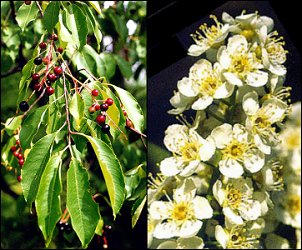 The rose family
is a large group with about 120 genera
and 3300 species. It is primarily a temperate climate family but is
scattered around the world. Most the species are not trees but some are very
important in the fruit industry, such as apples, cherries, peaches, plums, and
others. However, in terms of forestry only black cherry has significance.
There are many shrubs that are family members including hawthorne, juneberry, mountain
ash, wild rose, blackberries, raspberries, and gooseberries. The particular page
will cover the member of the genus Prunus. About 25 species occur in
the USA, of which 18 are tree size. All the U.P. cherries have simple leaves with
finely-toothed margins. They
all produce edible fruits and all have a distinct bitter taste to the twigs. Flowers
are white. Only black cherry commonly grows to tree size and form, although it
occurs as a shrub on poorer sites. On better sites, the other cherries sometimes
become small trees. Cherries and cherry-like shrubs can often be found along roads
under powerlines. Some cherry-eating birds commonly roost on powerlines and drop the
pits below.
The rose family
is a large group with about 120 genera
and 3300 species. It is primarily a temperate climate family but is
scattered around the world. Most the species are not trees but some are very
important in the fruit industry, such as apples, cherries, peaches, plums, and
others. However, in terms of forestry only black cherry has significance.
There are many shrubs that are family members including hawthorne, juneberry, mountain
ash, wild rose, blackberries, raspberries, and gooseberries. The particular page
will cover the member of the genus Prunus. About 25 species occur in
the USA, of which 18 are tree size. All the U.P. cherries have simple leaves with
finely-toothed margins. They
all produce edible fruits and all have a distinct bitter taste to the twigs. Flowers
are white. Only black cherry commonly grows to tree size and form, although it
occurs as a shrub on poorer sites. On better sites, the other cherries sometimes
become small trees. Cherries and cherry-like shrubs can often be found along roads
under powerlines. Some cherry-eating birds commonly roost on powerlines and drop the
pits below.
 BLACK CHERRY (Prunus serotina)
BLACK CHERRY (Prunus serotina)
Other
Names: Wild Cherry, Rum Cherry, Mountain Black Cherry
Key ID Features: Bark, Rusty Leaf Fuzz, Fruit, Bitter Twig Taste

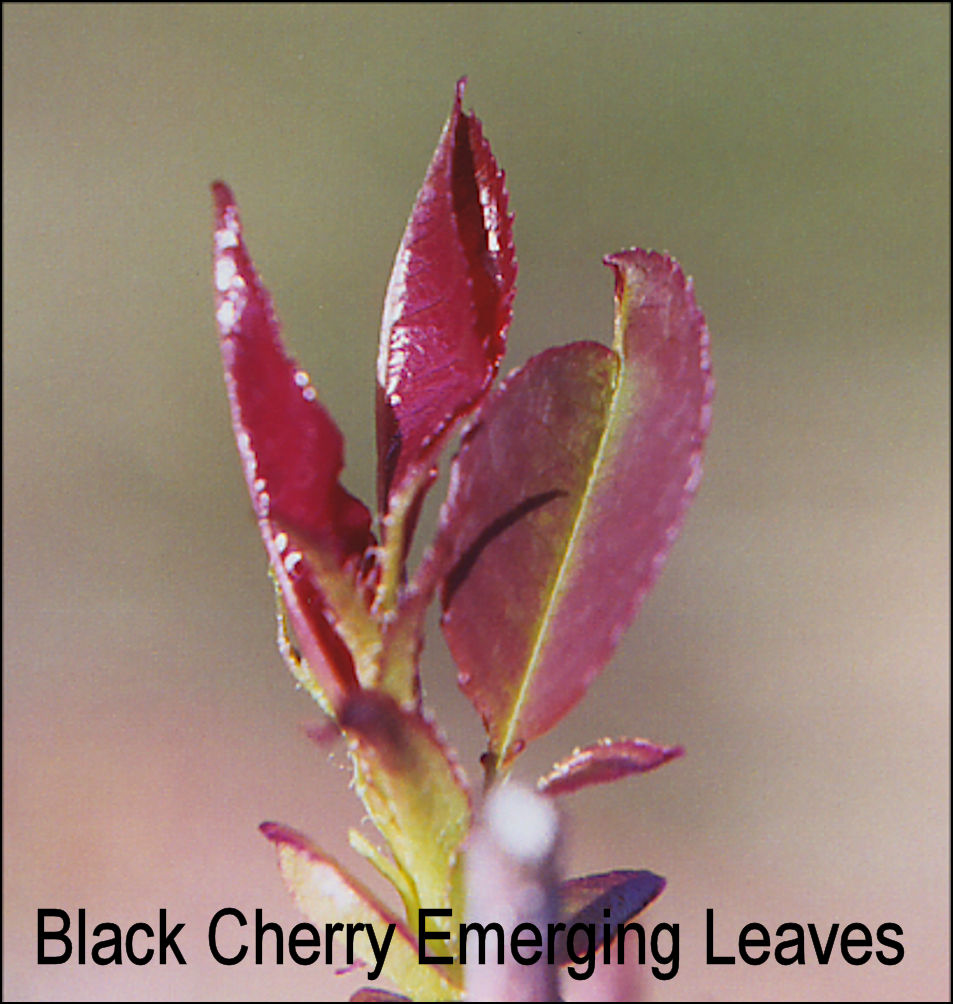

LEAVES of black cherry are 2-6 inches long,
about an inch to inch-and-a-half wide, with a pointed tip. Most of the season,
rusty-colored FUZZ can be found on the back of the leaf, along the mid-vein, especially
near the leaf stem. The teeth along the leaf margin are somewhat incurved. White FLOWERS
bloom in June after leaf-out. The CHERRIES turn from dark red to dark purple in
September, later than the similar choke CHERRIES. FLOWERS and CHERRIES are arranged
in a "raceme" which is a central stem with numerous, short side stems holding
one berry each. The BARK starts out smooth and dark gray but soon develops black
scales that resemble burnt potato chips. The TWIGS are slender, dark gray, with a
bitter taste. A disease called "black knot" often infects the TWIGS.
It appears as a large, black swelling with a "soot-like" covering.
Terminal BUDS are a little longer than wide and
sharp-tipped. The TRUNK is often sweepy
but on good sites with the proper stand history can grow nice log sizes and shapes.
Black cherry often occurs on sites that have been severely disturbed within the last
several decades. It often grows in ASSOCIATION with oak, aspen, and a number of
brush species. It is intolerant of shade and soon dies out in stands of longer-lived
species. Common pests: eastern tent caterpillar, leafminers, cankerworms, tussock moths, ugly nest caterpillar, walkingsticks, black knot, frost cracking.
 PIN CHERRY (Prunus pensylvanica)
PIN CHERRY (Prunus pensylvanica)
Other
Names: Fire Cherry, Bird Cherry
Key ID Features: Leaves, Fruit, Habitat, Bark
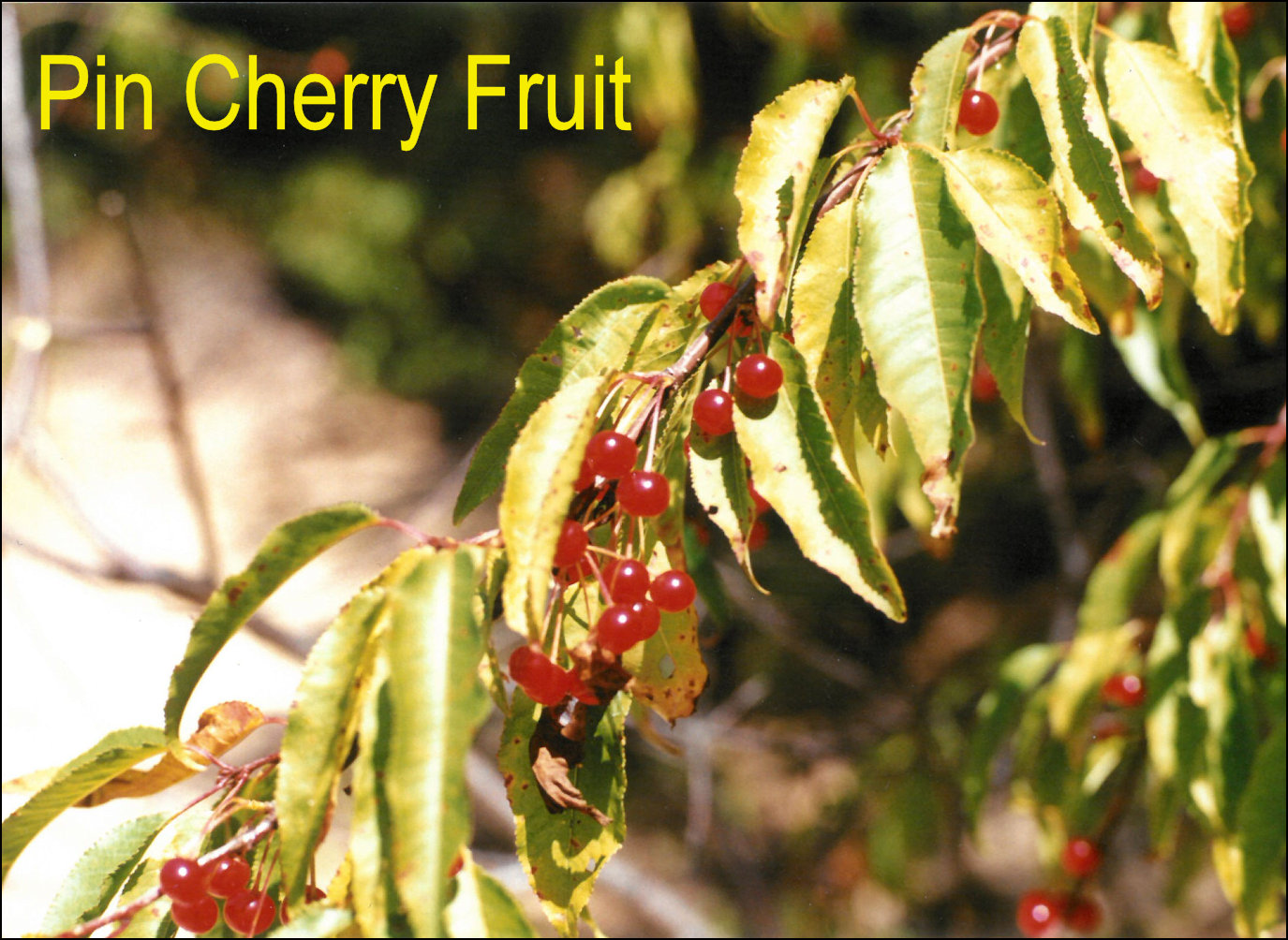
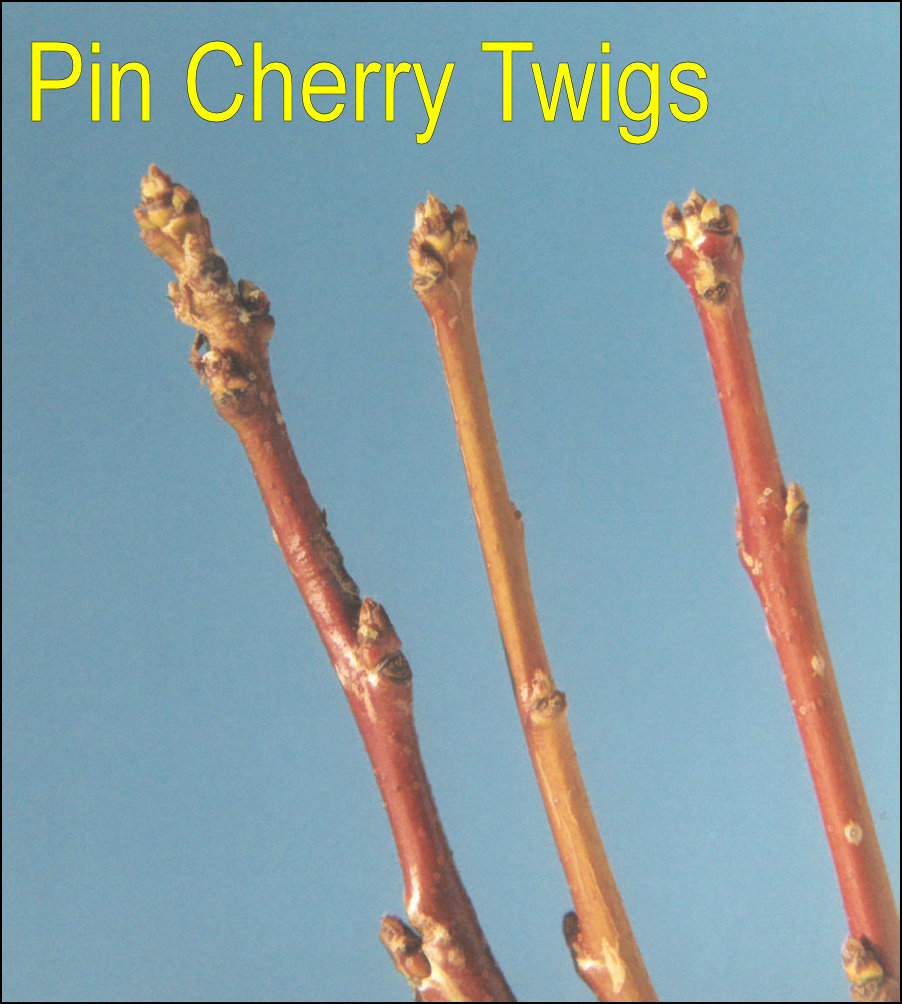
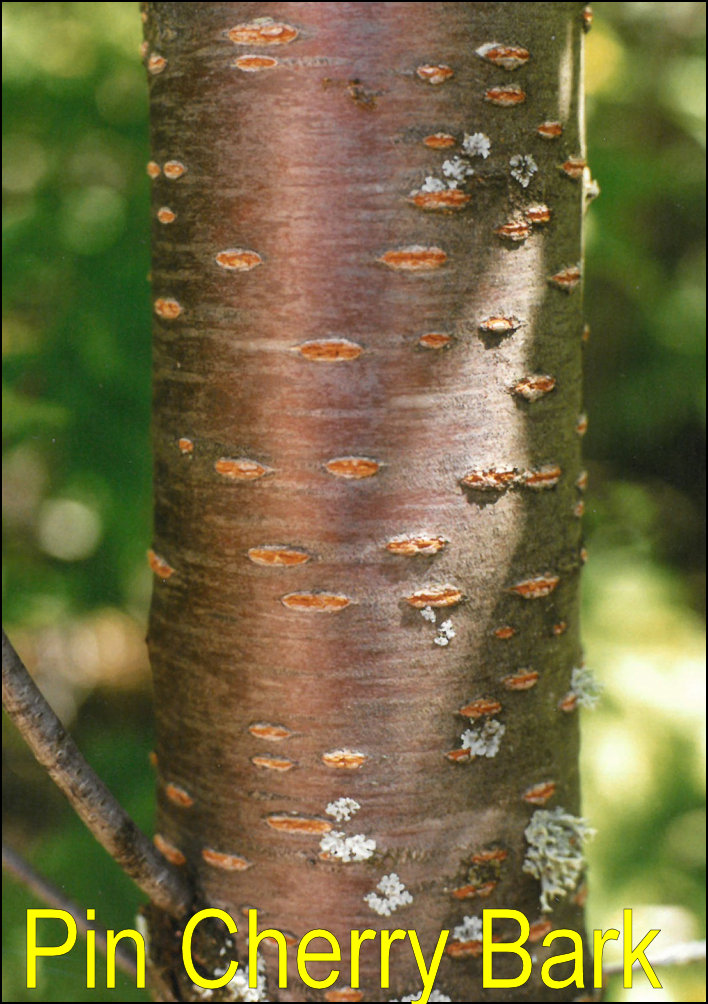
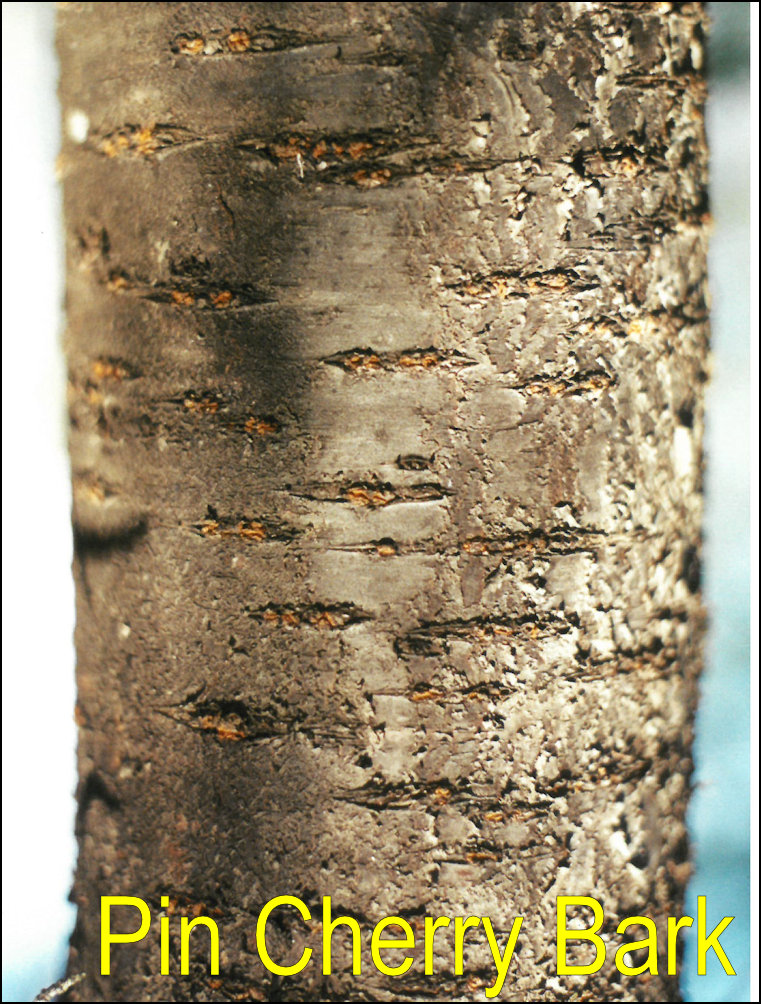
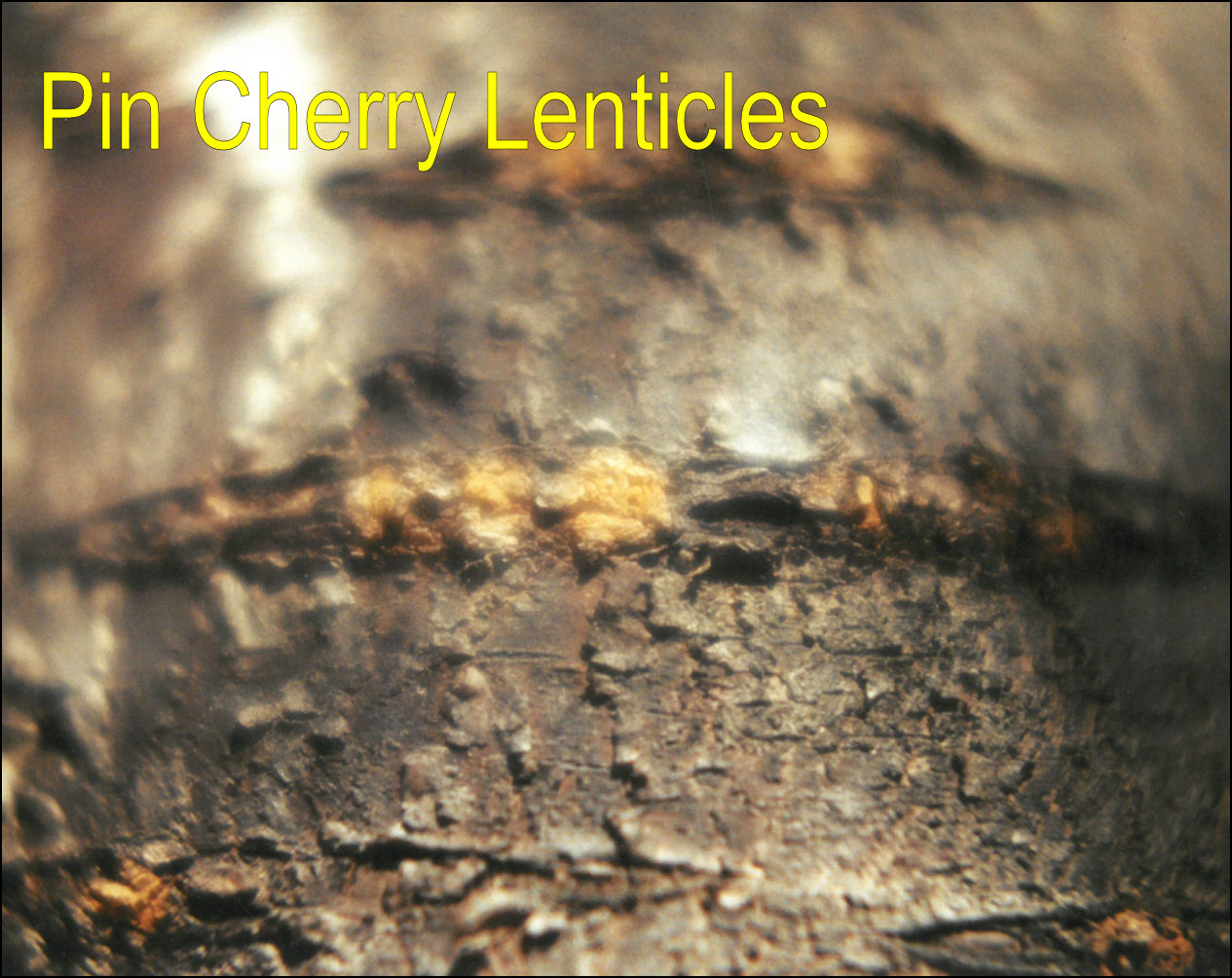
LEAVES are similar to black cherry but usually
a bit more elongated and without the rusty fuzz. The teeth along the leaf
margin are somewhat incurved. The ripe CHERRIES
are bright red and arranged in clusters. They appear in August and are quite tart to
the taste. The BARK is a bronzy-purple with horizontal pink-salmon bands about an
inch long. The terminal BUDS
occur in clusters of 2 or 3 rounded BUDS. TWIGS are usually quite slender and dark
gray in color. Pin cherry readily invades old fields and burns. It will often
appear as brush and seldom reaches tree size. Common pests: eastern tent caterpillar, leafminers, cankerworms, tussock moths, ugly nest caterpillar, walkingsticks, black knot, frost cracking.
 CHOKECHERRY (Prunus
virginiana)
CHOKECHERRY (Prunus
virginiana)
Other
Names: Bird Cherry, Jam Cherry
Key ID Features: Leaves, Fruits, Twig Taste

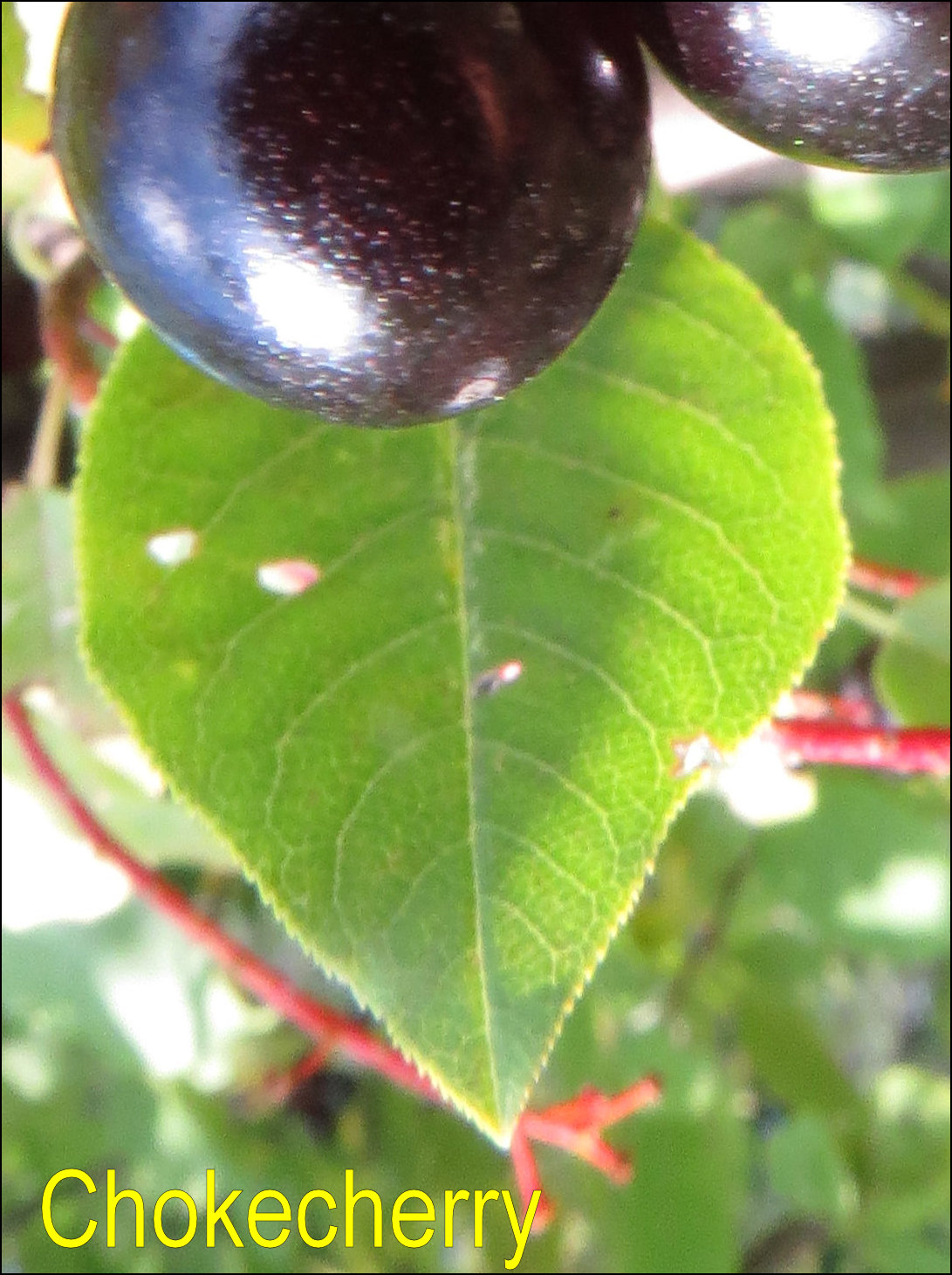

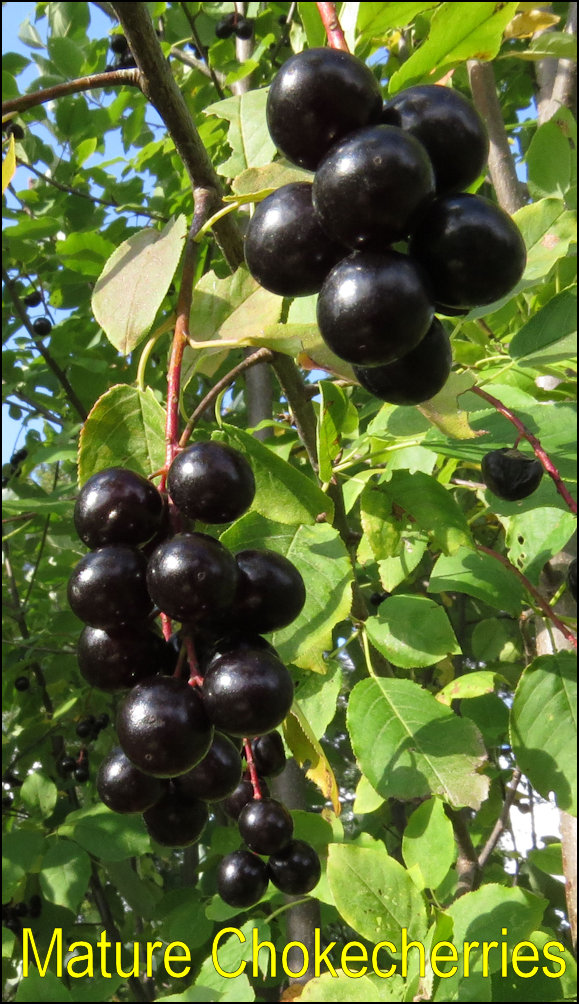
The LEAVES are 2-4 inches long and usually widest
closer to the tip than to the base. The teeth along the leaf
margin are not incurved, which can
separate choke cherry from the other two CHERRIES. The FLOWERS and fruits arranged
in "racemes", very similar
to black cherry. However, choke cherry often denser racemes and more CHERRIES.
The crown is often full with white FLOWERS in the spring, just after leaf-out.
The reddish CHERRIES ripen in August to a dark purple or black, before black cherry.
The BARK is medium to dark gray and has raised, warty spots. The TWIGS are medium to dark
gray with terminal BUDS 2-3 times
their width and pointed. The TWIGS are most bitter of all the CHERRIES and
cherry-like shrubs. Chokecherry is almost always a SHRUB and is more common than
pin cherry. Rabbits and deer generally shy away from chokecherry, so it may locally
very abundant, especially in the southern U.P. Common pests: eastern tent caterpillar, leafminers, cankerworms, tussock moths, ugly nest caterpillar, walkingsticks, black knot, frost cracking.
Click on the blue to return to the Deciduous Summer Key or the Deciduous Winter
Key.
Click HERE to return to the home page.
A note about the images on this website, click here.
This site created and maintained by Bill Cook, MSU Extension Forester for the Upper Peninsula of Michigan. Editing and modification is ongoing. Submit suggestions, questions, and corrections to cookwi@msu.edu or call 906-786-1575.